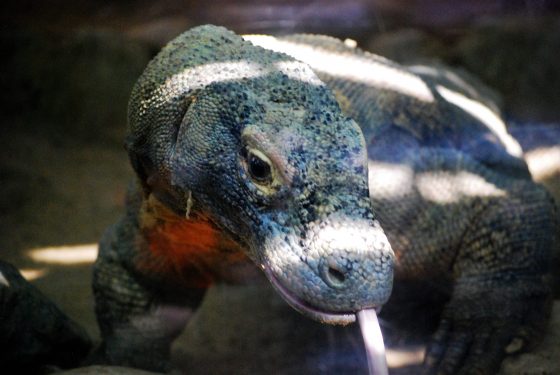A recent discussion of the pros and cons for feathered dinosaurs noted that birds and dinosaurs were created on different days.[1] Birds were assigned to Day 5 (Gen 1:20), but the dinosaurs to Day 6 (“beasts of the earth” Gen 1:24 esv). Such a distinction ignores the fact that our modern, scientific taxonomic groups do not necessarily reflect the biblical descriptions given for the creatures made on each day.[2] For instance, if we consider what day reptiles were made, we immediately realize it is a complicated question because there are terrestrial, aquatic, and flying reptiles. The great number of aquatic reptiles could be included in “the great sea creatures[3] and every living creature that moves, with which the waters swarm” (Gen 1:21 esv). The following marine reptiles would be candidates for Day 5 creations: plesiosaurs, ichthyosaurs, and mosasaurs. These three groups include many species and may themselves consist of multiple created kinds.[4]
As can be seen, these two major groups of marine and flying creatures include many reptiles. That means that God created reptilian creatures on Days 5 and 6, since lizards and snakes fall among “the creeping things and beasts of the earth” of Day 6 (Gen 1:24 esv). Spreading animal classes across different creation days occurs also with mammals: flying mammals (like the bat) on Day 5, but land mammals on Day 6. Various organs, skeletal structures, and functions display repetition across class boundaries:
- Egg-laying is found among Day 5 birds and reptiles,[7] but it is also present among some Day 6 reptiles and mammals
- Lungs are found in birds, mammals, reptiles, amphibians,[8] and some fish[9] made on Day 5, but also among Day 6 reptiles, amphibians, and mammals
- Two-legged animals are found among birds on Day 5 and mammals and reptiles on Day 6
- Four-legged animals on Day 6 includes amphibians, reptiles, and mammals
- Warm-bloodedness is found in both birds (Day 5) and mammals (Days 5 and 6)
- Flying (winged) birds, reptiles, and mammals would have all been made on Day 5

The penguin provides a good example of potential ambiguity in its creation day appearance. Although it is classified as a bird, it is not a “flying creature” and is only semi-aquatic, perhaps moving it out of Day 5 into the Day 6 creatures. We violate sound exegetical principles by any dogmatism in attempts to disambiguate the penguin’s creation day entrance. Since we must be careful with a living animal like a penguin, we must be even more cautious in making dogmatic statements about which day God created an animal we only know from fossils.
Endnotes
* Photos: Komodo Dragon, by Jessica McLain with permission; Penguins, licensed through Adobe Stock
[1] Haynes, “The debate over the classification of Archaeopteryx as a bird,” Answers Research Journal (2022).
[2] See McLain, et al. “Feathered dinosaurs reconsidered: New insights from baraminology and ethnotaxonomy,” Proceedings of the ICC (2018), pp. 506–8 for more discussion of this topic.
[3] Leupold, Exposition of Genesis (Baker, 1942), p. 80 includes “amphibians like the saurian of every class and description.”
[4] None of these groups have yet been investigated with statistical baraminology, although non-plesiosaur sauropterygians have by LePore and McLain, “Which came first, the flipper or the leg? Evaluating the sauropterygian fossil record from a creationist perspective,” Journal of Creation Theology and Science, Series B (2021).
[5] Sarfati, The Genesis Account, 2nd ed. (Creation Book Publishers, 2015), p. 224 suggests the Hebrews classified creatures according to their mode of locomotion.
[6] There is good evidence for multiple created kinds of pterosaurs. See, for example, McLain, “New baraminological analysis of ‘basal’ pterosaurs confirms multiple holobaramins,” Journal of Creation Theology and Science, Series B (2022).
[7] The Greek Septuagint translates both “swarms” and “creepers” in Gen 1:20, 21, 24, 25, 26, 28, 30 with herpeton (“reptile”), perhaps because the translator recognized reptiles to be both aquatic and terrestrial.
[8] Some extinct amphibians were likely totally aquatic (e.g., Acanthostega, Crassigyrinus, etc.) as are some living amphibians (e.g., sirens).
[9] Lungfish, for examples, possess both gills and lungs.
Authors
-
-
Emeritus Professor OT and Hebrew (retired)
View all posts
Canyon Ministries, Board Chairman
Author and Editor -
-
